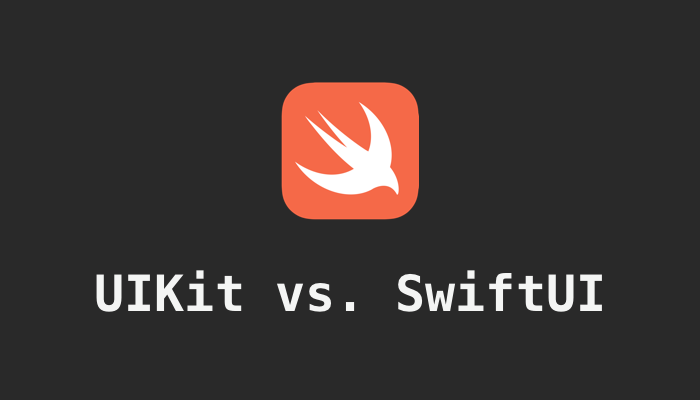UIKit vs. SwiftUI - A general discussion

UIKit and SwiftUI are two different frameworks for building user interfaces on Apple platforms.
UIKit
UIKit is the older of the two frameworks, and has been around since the early days of iOS development. It is a mature and powerful framework that provides a wide range of tools and APIs for building user interfaces, and is widely used by developers to create iOS and macOS applications. We can either use XIB, Storyboard or code to generate the user interface with the help of UIKit.
SwiftUI
SwiftUI, on the other hand, is a relatively new framework that was introduced in 2019 with the release of iOS 13. It is designed to make it easier and faster to build user interfaces for all of Apple's platforms, using the concept of declarative programming and a modern design philosophy. SwiftUI is built on top of the same underlying technologies as UIKit, but it offers a different way of thinking about and building user interfaces.
Which one should I choose
When deciding whether to use UIKit or SwiftUI, the main factor to consider is the platform and devices you are targeting, as well as your personal development preferences. UIKit is the older of the two frameworks, and it is the primary framework for building user interfaces on iOS and macOS. It is a mature and powerful framework that provides a wide range of tools and APIs for building user interfaces, and it is widely used by developers to create iOS and macOS applications.
If you are building an app for one of these platforms and you are comfortable with UIKit, then it is probably the best choice for your project. UIKit also has the advantage of being well-established and well-documented, so there is a wealth of information and resources available to help you get started and overcome any challenges you may encounter.
On the other hand, if you are building an app for one of Apple's newer platforms, such as watchOS or tvOS, or if you are looking for a more modern and efficient way to build user interfaces, then SwiftUI may be a better choice for your project. SwiftUI is designed to make it easier and faster to build user interfaces for all of Apple's platforms, using a declarative syntax and a modern design philosophy. It is built on top of the same underlying technologies as UIKit, but it offers a different way of thinking about and building user interfaces.
Ultimately, the choice between UIKit and SwiftUI will depend on your specific project requirements and your personal development preferences. Both frameworks have their strengths and weaknesses, and it is important to carefully evaluate your options and choose the one that is best suited to your needs.
Summary
In general, SwiftUI is seen as a more modern and efficient way to build user interfaces, and it is likely to become increasingly popular among developers in the coming years. However, UIKit is still a powerful and widely used framework, and it will continue to be a valuable tool for developers who need to create complex user interfaces or integrate with older technologies.
